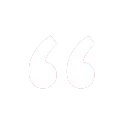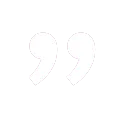Grace House Residential Care Home in Farnham uses Docobo Remote Monitoring to enhance resident care and support staff
Read More

View navigation
Solutions
Our Docobo Remote Patient Monitoring (RPM) solution empowers patients to take an active role in their health, supporting self-care and improving well-being. Our Remote Patient Monitoring solution is transforming out of hospital care.
When this RPM solution is combined with Graphnet’s population health management software care professionals can identify individuals who will benefit the most from remote patient monitoring, easing the burden on the wider healthcare systems.
Remote patient monitoring – or RPM – means healthcare providers can deliver care outside of clinical settings, enhancing patients' quality of life at home, in care homes, or other preferred locations.
Using RPM not only benefits the patient but can also help reduce the strain on NHS hospital admissions and lengths of stay.
Docobo Remote health Monitoring tools support providers to monitor patients with long-term conditions across a wide range of health services including:
Respiratory
Cardiac
Diabetes
Motor neurone disease
Frailty
Cancer
Learning disabilities
Elderly care
Post-treatment monitoring
One of the central tools to support remote patient monitoring is our Docobo Virtual Ward Solution.
Used widely across the NHS, the virtual ward solution is designed to provide hospital-level care for patients in the comfort of their own homes, easing the strain on the NHS by freeing up hospital beds.
Our DOC@HOME® paediatric virtual wards are one such example. Working to manage the increase of children being admitted into high dependency care, this remote monitoring solution ensures children who have been discharged from hospital are still receiving expert levels of care at home.
Working in conjunction with the virtual wards, our Medical Device Regulation-accredited Class 2 device ensures high-standard monitoring for both patients and clinicians.
The device features:
Built-in cardiorespiratory tools: Capture and submit ECG and breathing rate data, accessible to clinicians through a portal displaying patient observations and clinical threshold alerts.
Easy-to-use settings: Helping to reduce digital inequalities in healthcare, the device is easy to hold and supports those with limited technology experience or dexterity challenges.
Patient-centred technology: The device enables patients to share insights on symptoms, pain levels, quality of life, mental health and overall wellbeing.
Flexible data submission: The device has options for secure messaging or video conferencing, allowing clinicians to configure questionnaires to individual patient needs.
Paula Love, Lead Nurse for Integrated Care Transformation and Interim Lead for the remote monitoring Virtual Clinical Care Team Hub says: “Through the use of clinical innovation, this device emerged as a powerful tool for community screening in Northamptonshire.
“As a class 2 medical device, it is helping to bridge inequalities in fostering proactive healthcare in the local communities where it is needed most.
“Through this collaboration, the clinical screening team has been able to extend the reach of clinical assessments for Atrial Fibrillation and Hypertension by empowering local community champions to deliver accessible screenings that pave the way for a healthier future.
“This clinical model could significantly contribute to the crucial first line of defence in identifying these critical health issues, allowing for timely interventions that can prevent complications, hospitalisations and improve the overall health and well-being of individuals.”
Supports the management of long-term conditions: Conditions such as chronic obstructive pulmonary disease, hypertension, cardiovascular disease can be managed from the comfort of a patient’s home.
Reduces strain on NHS: Reduced in-person appointments and home visits enables clinicians to care for more patients and deliver better outcomes.
Improves patient flow and optimises capacity: Regular observation ensures that care providers can spot any developing issues in their patients and intervene accordingly, reducing unplanned hospital admissions.
Fosters a holistic and patient-centred approach to care: Patient recorded measures help clinicians monitor progress and facilitate communication.
Dr Rupert Page, consultant neurologist at Poole Hospital, said: “We can use this solution to deliver effective treatment when our patients need it, instead of four times a year in routine, often unproductive appointments.”
Contact us today to discover how Graphnet Health tools can support your team.


We can use this solution to deliver effective treatment when our patients need it, instead of four times a year in routine, often unproductive appointments.
Dr Rupert Page, consultant neurologist Poole Hospital